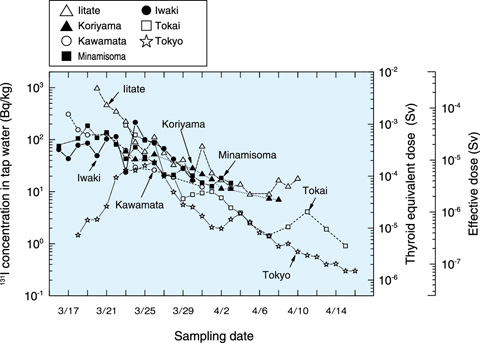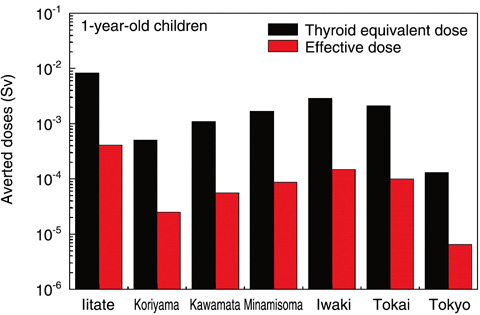
Fig.1-33 Concentration of 131I in tap water and projected doses

Fig.1-34 Averted doses by implementing tap water restrictions
The accidents at the TEPCO’s Fukushima Daiichi NPS resulted in considerable land contamination, and thus tap water restrictions were implemented to reduce the internal doses due to ingestion of radionuclides such as iodine 131 (131I). After the concentration of 131I in tap water decreased, local governments were required to make a decision concerning the termination of tap water restrictions. However, because there was no clear provision for the termination of tap water restrictions, social confusion was induced. When considering appropriate protective action for avoiding unnecessary exposure, it is important to review the effectiveness of the tap water restrictions by examining the temporal change in the concentration of 131I in tap water and evaluating the dose prevented by the implementation of the tap water restrictions -, i.e., the averted dose. To contribute to the development of criteria for the termination of tap water restrictions, the concentration of 131I in tap water was examined using monitoring data published by several authorities in Fukushima, Ibaraki and Tokyo, and this data was applied to the subsequent evaluation of the averted doses for members of the public -1-year-old children- due to the intake of 131I through tap water restrictions.
Fig.1-33 shows the concentration of 131I in tap water in Iitate, Koriyama, Kawamata, Minamisoma, Iwaki (Fukushima), Tokai (Ibaraki), and Tokyo using data from March 16 to April 16, 2011. The concentration of 131I varied with the sampling point, but showed an overall tendency to decrease with time. It was found that the apparent half-life of 131I in tap water was 2.8±1.2 days, which was shorter than the physical half-life of 131I (8.0 days).
Fig.1-34 shows the averted doses for 1-year-old children by implementing tap water restrictions in Fukushima, Ibaraki and Tokyo. The doses were evaluated by multiplying the daily 131I intake amount from tap water for 1-year-old children with the dose coefficient of the International Commission of Radiation Protection (ICRP). In Iitate, the maximum averted equivalent dose to the thyroids and the effective dose were found to be 8.3 mSv and 4.1 × 10-1 mSv, respectively. This result indicated that the tap water restrictions were an effective protective action for reducing the internal doses due to ingestion of 131I. In Tokai, the dose due to ingestion of 131I was averted fortuitously because it took substantial time to restore the water supply owing to repeated earthquakes and continuous blackouts. In Tokyo, the concentration of 131I in tap water was relatively low and tap water restrictions were implemented only for one day. Nevertheless, the averted equivalent dose to thyroids was found to be 1.3 × 10-1 mSv, confirming that the tap water restrictions were implemented effectively.